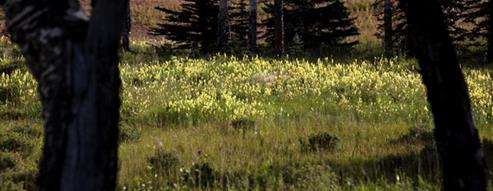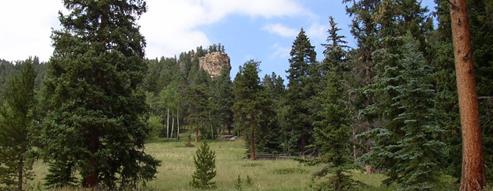The park is a mosaic of low grasslands, rocky foothills, soaring granite
cliffs, and lush stream corridors. The combination of more than 2,000-feet
elevation gradient, a broad variety of terrain and the presence of water
features in the park has resulted in an extensive diversity of vegetation
communities and wildlife within the park.
Portions of the park have been
given protective designations. These are non-regulatory designations that are
intended to promote the conservation of sensitive resources through voluntary
measures and proactive partnerships.
Please help protect the wonderful
resources of Staunton State Park by practicing Leave No Trace principles, such
as: traveling on durable surfaces and not short cutting trails, disposing of
waste properly by packing out your trash and cleaning up after your pets,
respecting wildlife by viewing them from a distance and being considerate of
other visitors by keeping pets on a leash at all times.
We are the
beneficiaries of this resource, we have been entrusted to enjoy, protect and
treasure this park.
Plants

The variety of terrain and soils of Staunton
State Park supports extensive vegetation diversity and complexity typical of
Colorado Front Range Mountains. In the upper montane forests, which cover the
vast majority of the Park, there are ponderosa pine, douglas-fir, lodgepole
pine, Englemann spruce, limber pine and aspen scattered throughout the park.
Interspersed with the forest are several lush meadow wetlands and drier
montane grassland communities. Riparian trees and shrubs and wetland vegetation
dominate the stream corridors.
Wildflowers are abundant throughout the
park. Join one of our naturalist led wildflower hikes to learn more about the
plant life in the park. To help preserve their beauty for future generations,
please do not pick the wildflowers or plants.
Wildlife

The mammal inhabitants of Staunton State Park
are common throughout the mountains and Front Range. The elk herd is a
distinguishing feature for visitors and the deer enjoy slowly meandering
throughout the park. Abert's squirrel, red fox and coyote can often be seen in
the park. Predators, such as mountain lions, bobcat and Black bear also make
their home in the park.
There are abundant and diverse avian habitats in
Staunton State Park. Mixed conifer forest stands contain many different tree
species and the dense diverse forest conditions are excellent habitat for common
forest birds and a variety of woodland raptors. Several wetland birds such as
the great blue heron, American dipper and the belted kingfisher can be seen at
the par. Rocky outcrops and cliffs are habitats for falcons, hawks and an
occasional golden eagle.
Please respect the wildlife by viewing them
from a distance and keeping your pets on a leash at all times.
Geology

Most of the Park lies on a large granite
formation called the Pikes Peak batholiths. Formed as the Earth's crust was
pushed up from below its hot liquid core, this batholith intruded into
Precambrian metamorphic rocks. Millennia of uplift and erosion exposed the
granite and eroded away most of the Precambrian rocks. Different rates of
erosion created spectacular groupings of granite cliffs and outcrops like Lions
Head, Chimney Rock, Elk Creek Spires and Staunton Rocks.
The rock found
throughout the park has unique colors, shades and sparkles. Please leave rocks
where you found them and do not take them home for your own collection.

